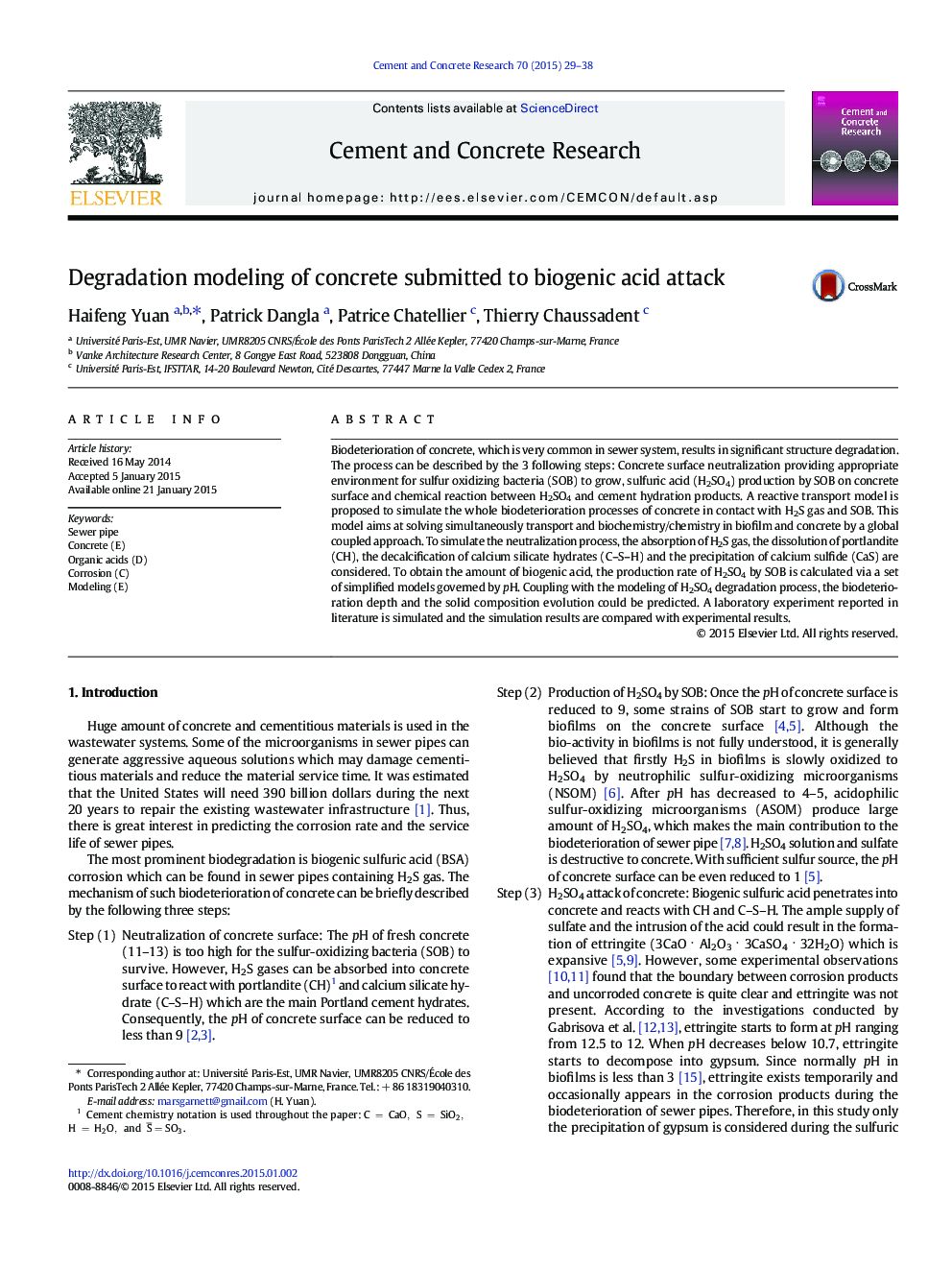| Article ID | Journal | Published Year | Pages | File Type |
|---|---|---|---|---|
| 1456116 | Cement and Concrete Research | 2015 | 10 Pages |
Biodeterioration of concrete, which is very common in sewer system, results in significant structure degradation. The process can be described by the 3 following steps: Concrete surface neutralization providing appropriate environment for sulfur oxidizing bacteria (SOB) to grow, sulfuric acid (H2SO4) production by SOB on concrete surface and chemical reaction between H2SO4 and cement hydration products. A reactive transport model is proposed to simulate the whole biodeterioration processes of concrete in contact with H2S gas and SOB. This model aims at solving simultaneously transport and biochemistry/chemistry in biofilm and concrete by a global coupled approach. To simulate the neutralization process, the absorption of H2S gas, the dissolution of portlandite (CH), the decalcification of calcium silicate hydrates (C–S–H) and the precipitation of calcium sulfide (CaS) are considered. To obtain the amount of biogenic acid, the production rate of H2SO4 by SOB is calculated via a set of simplified models governed by pH. Coupling with the modeling of H2SO4 degradation process, the biodeterioration depth and the solid composition evolution could be predicted. A laboratory experiment reported in literature is simulated and the simulation results are compared with experimental results.
